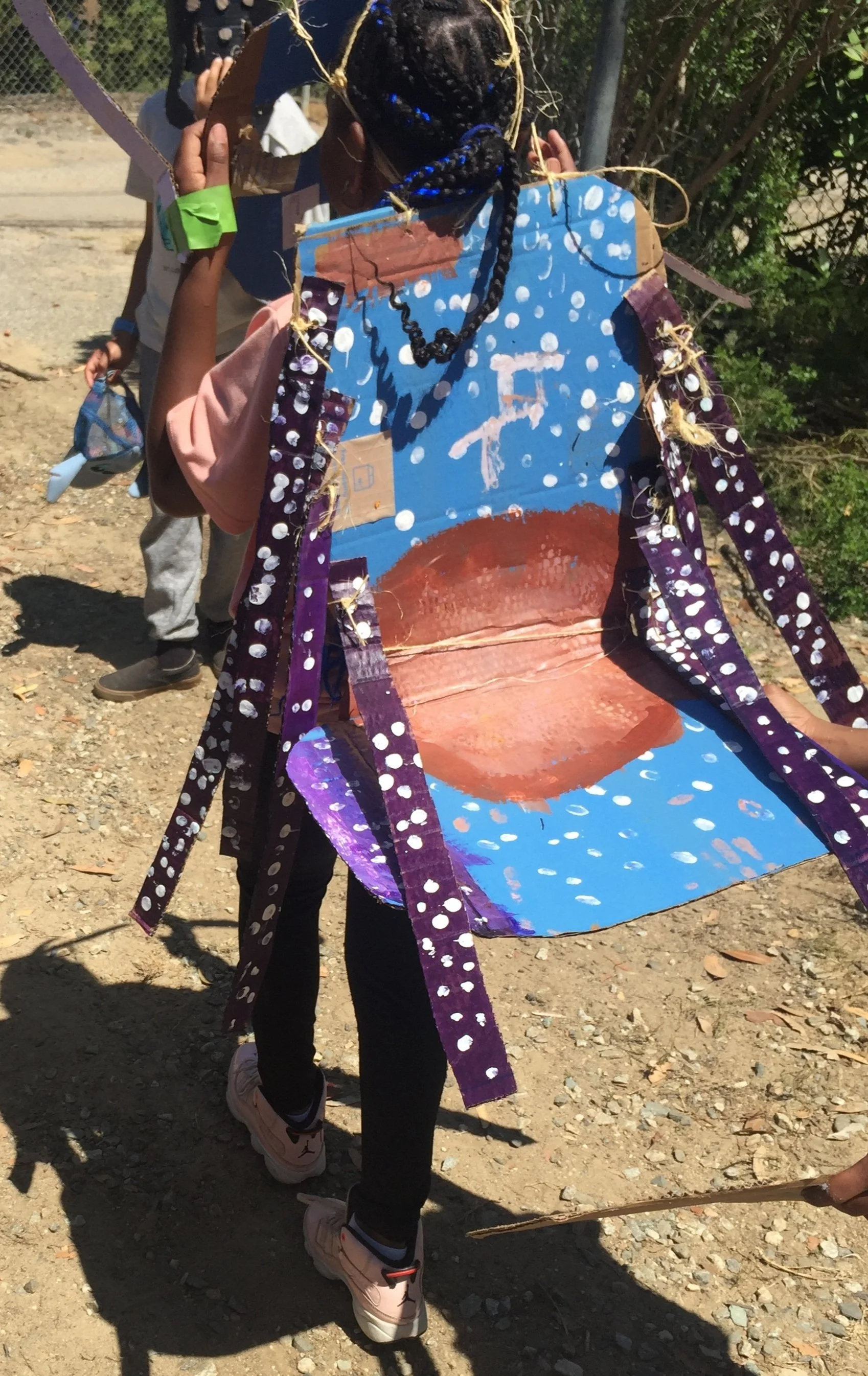Summer Day Camp: Outdoors is where it’s at!
Summer Camp for kids comes in all kinds of formats. I recently learned that there is such a thing as Minecraft Camp, where attendees spend all day inside, in front of computers, perfecting their gaming skills! We at Nature Nexus Institute are the polar opposite in our approach-all outdoors, all day long!
This June we were thrilled to be back in the business of Day Camp, after a three-year hiatus due to the recent International Health Crisis. The fantastic Island of Habitat amid our city, Kenneth Hahn Park, was the site of our adventures. 15 campers were in attendance, and we had a blast.
Day One was spent checking out the park, its many walking trails and canyons. Local wildlife, with an emphasis on birds, was our focus. With the aid of binoculars, we were able to spot multiple species, including Red Tail Hawks, Hummingbirds, recently fledged Hooded Orioles, and nesting Swallows. We also taught the campers how to use compasses to help us find our way, and played the Migration Game to highlight the challenges Migratory Birds have in finding their way during their twice-yearly travels.
The nesting Swallows seen on Day One were the perfect set-up for Day Two: all about Insects and Spiders. Some of our most beautiful birds are insectivores, including these swooping Swallows that make Southern California their Summer home and nesting ground. Often underappreciated, insects are essential to all ecosystems. After team member Angela Mendia's wonderful presentation on the subject, the campers were split into groups and asked to select an insect or spider, do some research, and construct a human (well, camper) sized costume of their chosen creature. Cardboard plucked from recycling bins was the medium, and along with some twine and paint each group created fantastic, wearable art. A model was then chosen to deploy their masterpieces in our Insect Fashion Show-the runway was happening!
A Southern California Nature Camp would be remiss if we did not include some ocean education. This vital ecosystem modifies our climate and is incredibly biodiverse and beautiful. So, on Day Three it was off to San Pedro to explore the tidepools and the Cabrillo Aquarium. The entire focus of the Aquarium is local sea life. The campers were excited to find Hermit Crabs, Sea Anemones, Turban Snails, and other denizens of the tidepools in the wild, and then learn more about them when visiting the Aquarium. The Touch Tank was especially popular, and all had a great seaside day.
Our final day was spent back at the park, hiking the trails and lunching at the Japanese Garden. More water species exploration continued at the man-made lake near the entrance to Kenneth Hahn. Where there is water, there is life, and we found plenty of invertebrates to view through microscopes. This also gave us a chance to again emphasize that the little things that are often overlooked, like insects and other invertebrates, are crucial to the food web.
All too soon it was time to say goodbye to our campers. We always do a small Camp Culmination Ceremony. Each child is given a certificate of completion, which they receive while being applauded by the rest of the group. We also ask each recipient to say what they liked best about Camp. To our delight, more than half said it was the friends they made during our week together. The recent bout of virtual learning that occurred during the last few years has impacted the social and emotional development of many children. Very few of the campers knew each other before camp. But some time together, learning, creating, and playing in the Great Outdoors with minimal adult intervention allowed the children to form friendships and bonds with each other independently. Of course, we managed to sneak a fair amount of education in there as well, but the happiness and abundant smiles of the campers were truly the marks of success.
We are already making plans for an amplified camp program for next year we will keep you posted!
This program is funded by the Outdoor Equity Grants Program, created through AB 209 and administered by California State Parks, Office of Grants and Local Services.









